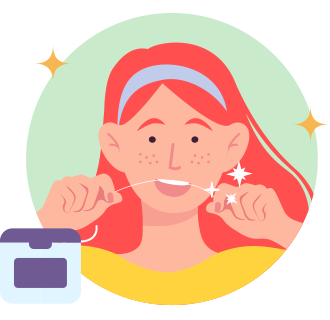Delta Dental brushing and flossing
How to brush
- Put the head of the toothbrush against your gumline and the tips of the bristles at a 45-degree angle to the gumline. (You may need to ask your parent for help with this.)
- Move the toothbrush back and forth, going in a circle and scrubbing several times in each spot.
- Keep the bristles angled against the gumline while you brush both the inner and outer surfaces of each tooth.
- Brush the chewing surfaces straight on.
- Clean the inside surfaces of the front teeth by tilting the brush upright and making several up-and-down strokes with the front of the brush.
- Finish by brushing your tongue, which helps remove germs from your mouth.
- Rinse with water or a fluoride mouthwash to remove loosened plaque.

- Brush your teeth gently. Don't squash the bristles — that means you're brushing too hard.
- Replace your toothbrush every two to three months, or as soon as the bristles are worn or bent. A worn-out toothbrush does not clean your teeth properly and can hurt your gums. You should also replace your toothbrush after you've had a cold.
- Be sure you are reaching every tooth. The toothbrush can only clean one or two teeth at a time, so move it around a lot.
- Try not to use a toothbrush with hard bristles. That can hurt your gums. Use a toothbrush with soft, rounded bristles.
- By the time you're eight, you should be able to floss your own teeth. Try using a loop of floss. Tie the ends of a 10-inch piece of floss, forming a circle. Hold the floss tightly between the thumbs and forefingers.
- Floss your teeth the same way each time, so that you don't miss any teeth.
- Floss gently so you don't hurt your gums.
